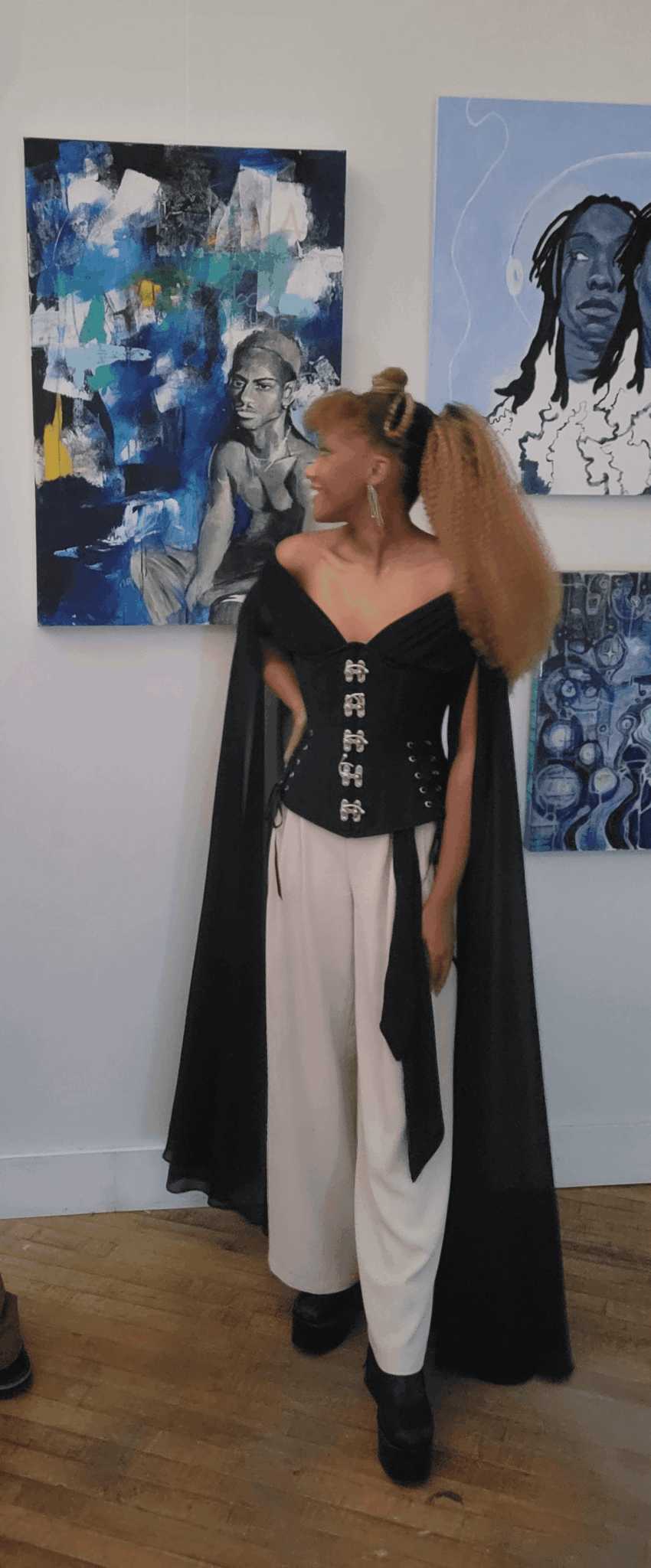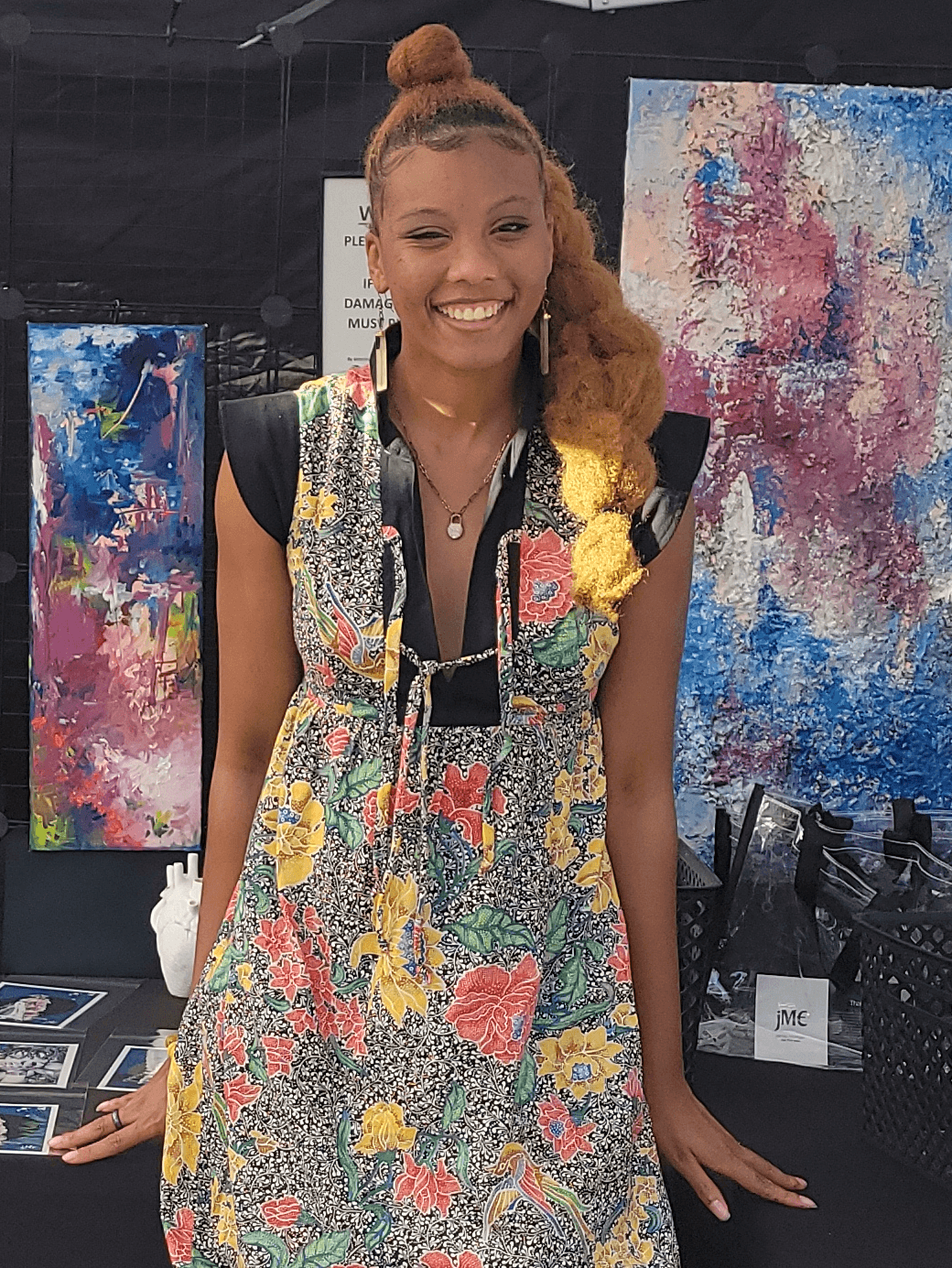We caught up with the brilliant and insightful Jaimie Monger a few weeks ago and have shared our conversation below.
Jaimie, thanks for taking the time to share your stories with us today Has your work ever been misunderstood or mischaracterized?
Yes, I’ve definitely experienced both misunderstanding and mischaracterization, and one of the most significant instances happened during my time in architecture school. I was pursuing my undergraduate degree, and as the only Black student left in the program, I quickly realized that I was being held to a different standard than my peers. There was a persistent scrutiny of my work and behavior that others simply didn’t face. My peers would freely borrow from my ideas, yet I felt increasingly isolated and judged more harshly by professors.
One particular project stands out to me: an honors assignment I titled “Larry.” The piece is about how I was pouring everything I had into my work, but no matter how much effort I invested, it seemed like everything I did was either misunderstood or overshadowed by the criticism that came from those who should have been my mentors. The pressure was intense, and it reached a point where the stress of constantly needing to prove myself triggered a mental and physical breakdown.
Looking back, I now realize that the intersection of my race, neurodivergence, and the unspoken biases I faced played a huge role in how I was perceived and treated. I eventually dropped out of graduate school after developing a heart condition and facing a complete mental shutdown that led to my hospitalization.
That period of my life taught me a lot about the importance of protecting my own creative voice and well-being, even when others may not fully understand it. I’ve come to accept that not everyone will grasp my perspective or the intent behind my work, but that doesn’t diminish its value or validity. It also opened my eyes to the necessity of advocating for more inclusive spaces, where artists—especially those who come from marginalized backgrounds—are allowed to be seen for who they are, not who others assume them to be.
This experience has deeply shaped my approach to art. Now, I embrace that art doesn’t always need to be explained or understood by everyone—it’s the emotional resonance and the conversation it sparks that matters most. And that’s a lesson I carry with me into every piece I create.
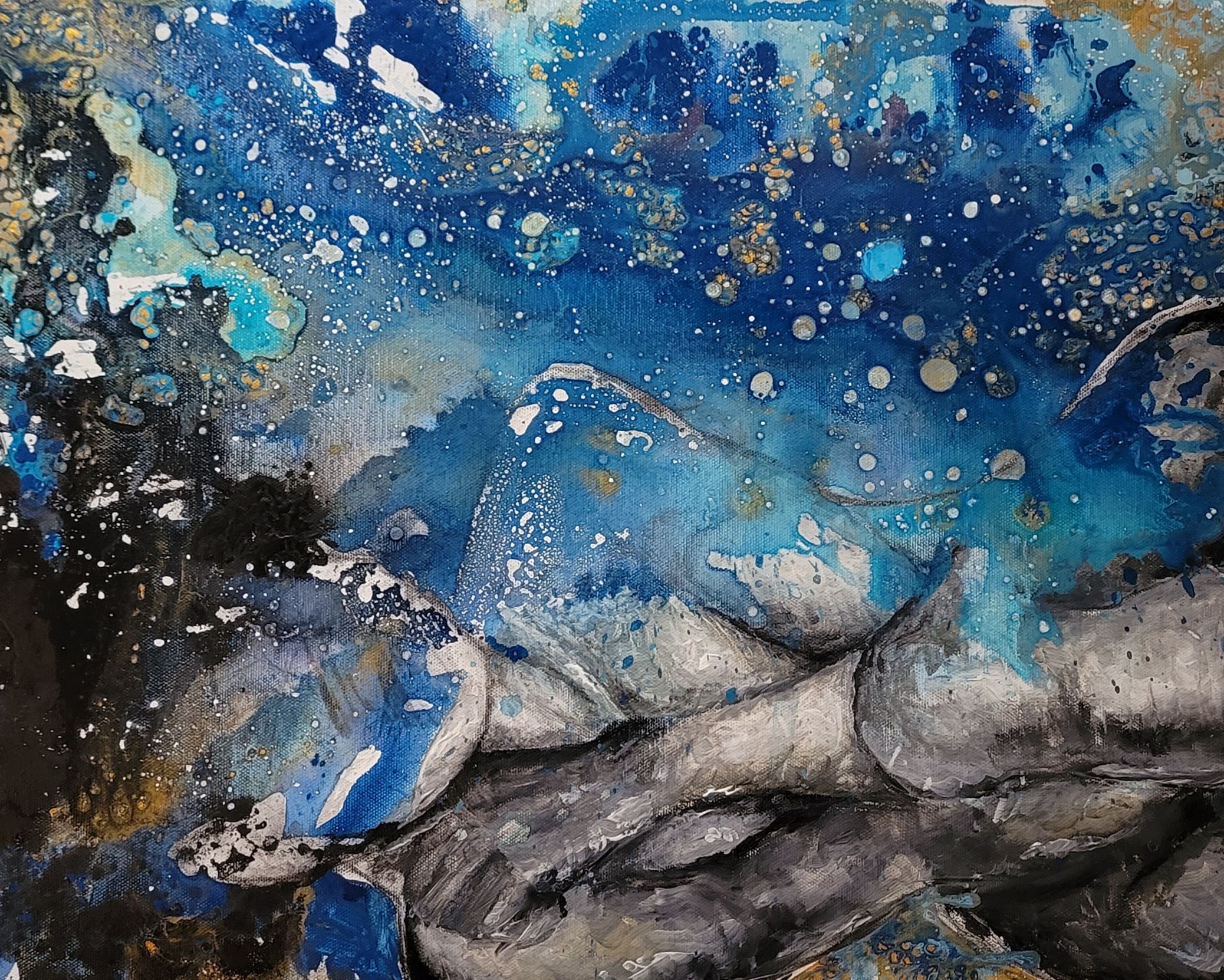
Jaimie, before we move on to more of these sorts of questions, can you take some time to bring our readers up to speed on you and what you do?
About Me and My Work:
I’m Jaimie-Nicole Monger, a visual artist who’s been creating for as long as I can remember. Art has always been my means of expression, ever since I could hold a crayon. My journey began in childhood, but I really started honing my craft through a combination of self-taught techniques and the support of my aunt and various art classes. Over time, I explored a wide range of media, from acrylic and oil paint to watercolor, pastel, digital art, and more. I’ve always been fascinated by how different materials can evoke different emotions, which is why I never limit myself to one medium—I prefer to experiment and push boundaries.
The turning point in my art career came when I stepped away from architecture school. I initially studied architecture in undergrad and had aspirations in that field, but the experience became a crucible for me. As a Black, queer, neurodivergent woman, I faced immense scrutiny and pressures that led to a mental health crisis. That breakdown was also a breakthrough in many ways, because it led me back to my first love—art—and I haven’t looked back since.
What I Create and What Sets Me Apart:
I primarily focus on abstract art and portraiture, using my work to express emotions and stories that often live beneath the surface. My pieces explore themes of identity, mental health, race, and personal transformation. One of the hallmarks of my work is my approach to letting the viewer take the lead in interpreting what they see. I prefer not to dictate meaning; instead, I love hearing how different people experience my art and how their interpretations compare to my own intentions. This open-ended, conversational nature of my art is something I hold dear, and I think it sets me apart from others in the field.
What truly defines my work is the raw authenticity I pour into each piece. Whether it’s through the dark labyrinth of my upcoming exhibition Alicia in Wonderland, or the vibrant synergy of color and sound in my show Chromatic, I aim to give people a visceral experience that invites them to think, feel, and reflect.
What I Offer:
Beyond just creating art, I also offer immersive experiences through live painting and interactive exhibitions. I’ve done live art at events like the Alder Cafe’s open mic and will be painting at the upcoming Black Arts + Wine Festival. These live events allow me to connect directly with people, showing them how art evolves in real time.
What I’m Most Proud Of:
I’m proud of the way I’ve been able to carve my own path in the art world, despite the challenges I’ve faced. I’ve learned to embrace my neurodivergence and use it as a strength that informs my creative process. I’m also proud of my ability to channel difficult experiences into something beautiful and transformative—not just for myself, but for others who engage with my work.
What I Want You to Know:
More than anything, I want potential clients, followers, and fans to know that my work is about honest expression and the human experience. I don’t create art to be pretty or to fit neatly into a box; I create to start conversations, evoke emotions, and challenge perspectives. Every piece I make has a story, but I want my audience to find their own story within it too.
If you’re looking for art that makes you feel something—whether it’s discomfort, joy, or curiosity—you’ll find that in my work. And if you’re looking for an artist who isn’t afraid to push boundaries and explore uncharted territory, I’m your person.
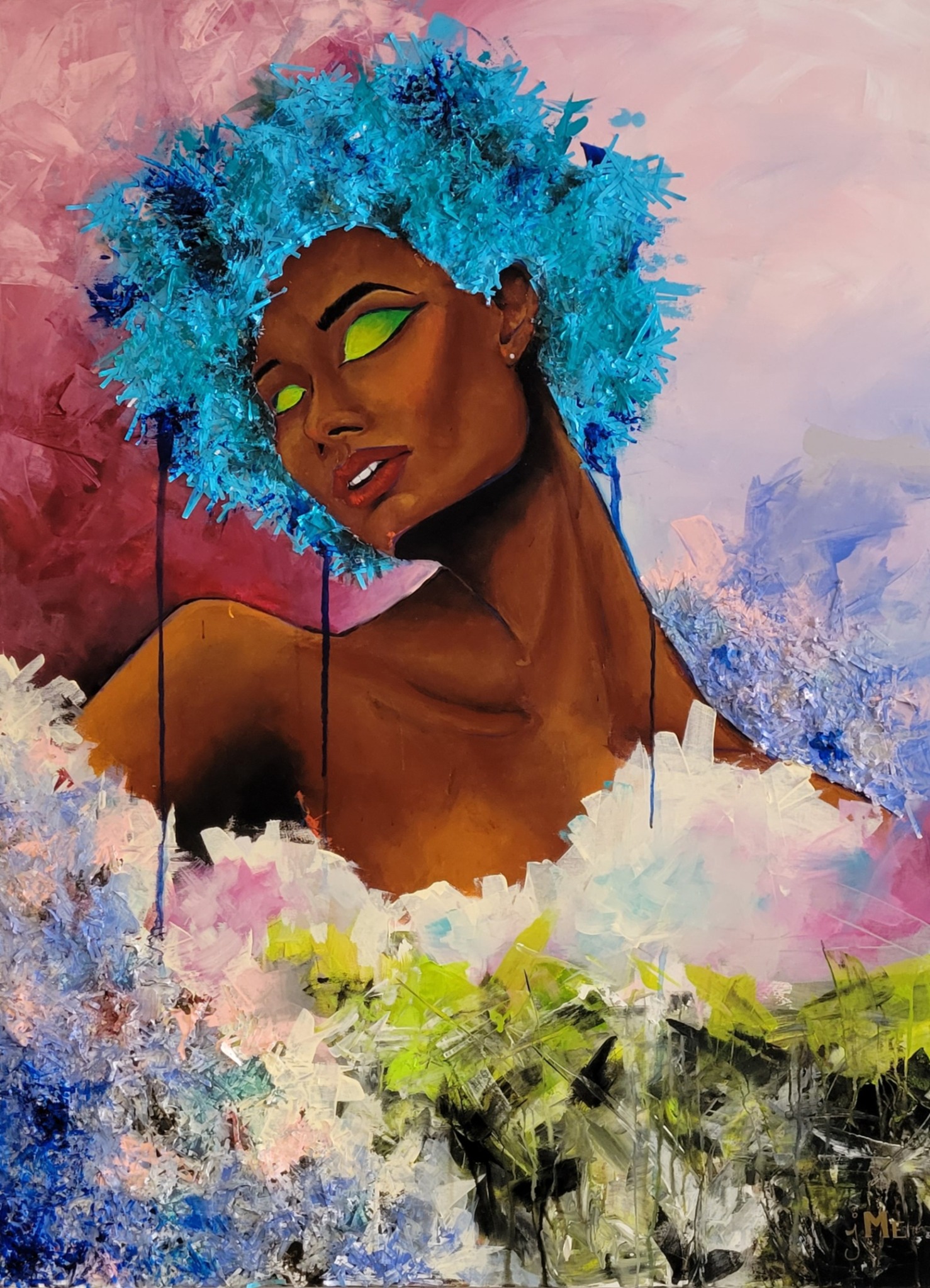
What’s the most rewarding aspect of being a creative in your experience?
For me, the most rewarding part of being an artist is the freedom to express my authentic self and connect with others on a deeply emotional level. Art gives me the space to navigate my own experiences—both joyful and painful—and transform them into something tangible that others can engage with. It’s a way for me to process life, but it’s also an invitation for others to see the world through a different lens, or to reflect on their own stories in new ways.
One of the most fulfilling moments is when someone resonates with a piece of mine in a way that I never expected. I love when a viewer brings their own interpretation or personal experience to a work, because it shows me that my art is living beyond my original intent. It’s creating conversations, sparking emotions, and building connections. That interaction, that exchange of perspectives, is something I treasure.
I also find deep reward in the process of creation itself. It’s an intimate, almost meditative experience where I can completely immerse myself in a flow of ideas, materials, and emotions. Whether I’m layering acrylics, blending pastels, or painting live at an event, there’s a moment where everything else fades away, and I’m fully present with the work. It’s a form of catharsis, and every completed piece feels like a personal victory.
Lastly, as a Black, queer, neurodivergent woman, I take immense pride in being able to share my story and perspective with the world. Knowing that I’m contributing to a larger dialogue about identity, race, mental health, and personal expression makes this journey even more rewarding. Every piece I create is a way of saying, “This is me, unapologetically,” and when others find strength or solace in that, it’s the most meaningful reward of all.
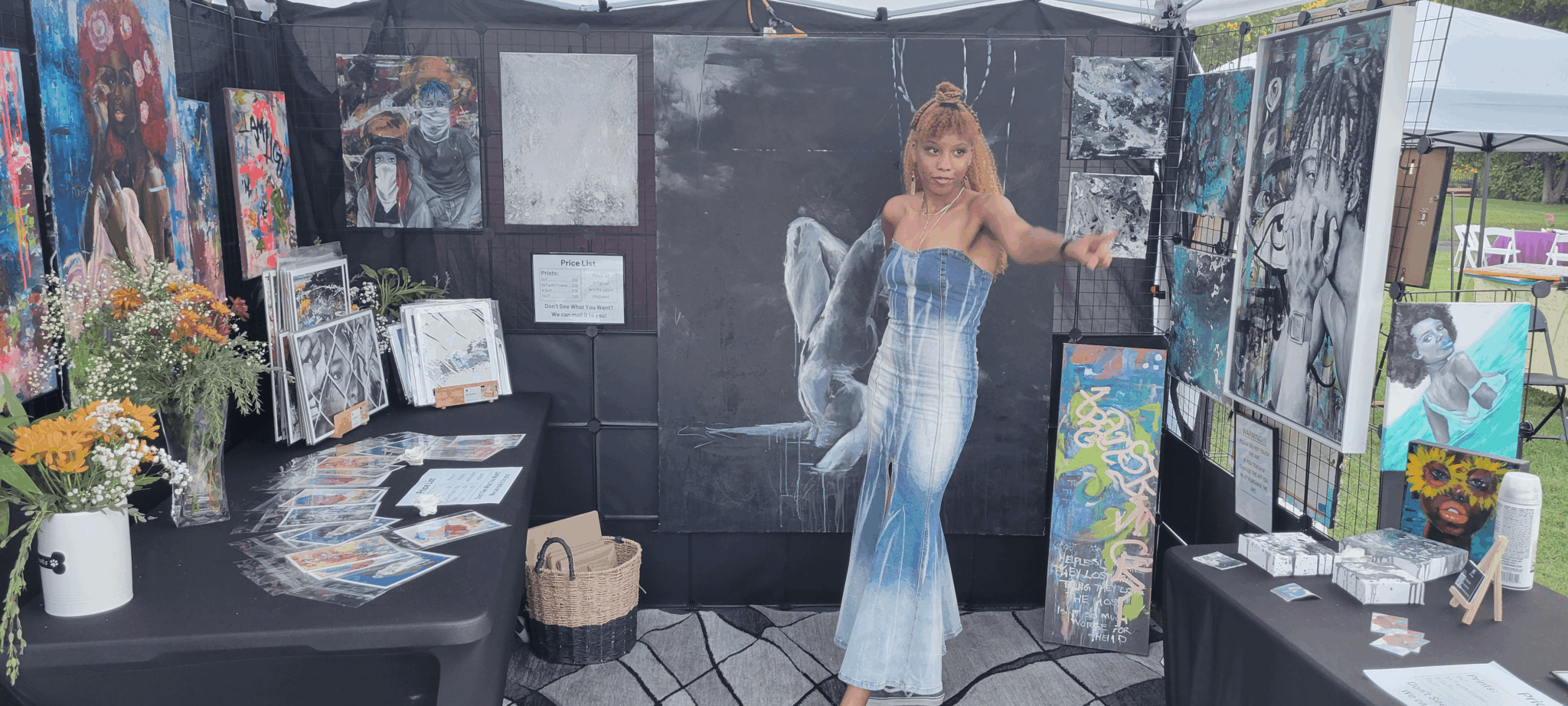
Is there something you think non-creatives will struggle to understand about your journey as a creative? Maybe you can provide some insight – you never know who might benefit from the enlightenment.
I think one of the things non-creatives might struggle to understand is just how personal the creative process is. For me, art isn’t just something I do—it’s a reflection of who I am, and it often requires me to tap into the most vulnerable parts of myself. Each piece of art I make holds a piece of my soul, shaped by my experiences navigating a world that doesn’t always make space for me. This means that the stakes are often high, and the pressure can feel immense—especially when people misunderstand or overlook the significance behind the work.
Many people assume that creativity is always free-flowing and fun, but for those of us who live and breathe our craft, there are moments of deep struggle. There’s the pressure to constantly produce, to meet others’ expectations, or even to prove yourself to those who may doubt your worth. There’s also the emotional rollercoaster of the creative journey itself. Some days, you’re filled with inspiration, and other days, self-doubt creeps in and paralyzes you. But even in those tough moments, I’ve learned that perseverance is key. I’ve come to accept that my process doesn’t have to look like anyone else’s, and that has been incredibly freeing.
Non-creatives might also struggle to understand the importance of failure in the creative process. I’ve made countless pieces that never see the light of day, and I’ve had exhibitions or ideas that didn’t land the way I envisioned. But every “failure” is a lesson that sharpens my craft and helps me grow as an artist. That’s part of the beauty of creativity—it’s a constant evolution, not a straight line to success.
I think the biggest insight I can offer is this: being a creative is about embracing uncertainty and learning to trust the process. It requires vulnerability, resilience, and the courage to keep going, even when things don’t make sense. And ultimately, it’s about creating something that moves people, even if the journey to get there is messy and difficult.
Contact Info:
- Website: https://yeathatartist.square.site/
- Instagram: yeathatartist
